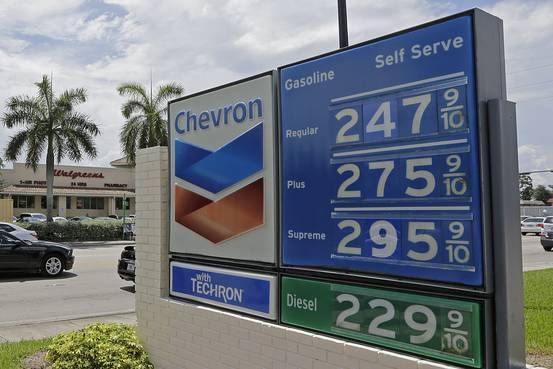In the dynamic and ever-evolving global economy, understanding how consumers spend their money is not merely a matter of economic curiosity; it’s a critical barometer of market health, a predictor of future growth, and a foundational element for strategic business decision-making. The landscape of commerce is in constant flux, shaped by technological advancements, societal shifts, and unforeseen global events. Consequently, tracking consumer spending trends with daily, granular insights has become an indispensable practice for businesses, policymakers, and investors alike. This relentless pursuit of real-time understanding allows entities to anticipate shifts, adapt strategies, and capitalize on emerging opportunities, transforming raw data into actionable intelligence that fuels the global economy and shapes tomorrow’s markets.
The Pulse of the Economy: Why Consumer Spending Matters
To truly grasp the significance of analyzing consumer spending trends, one must first understand its pivotal role within the broader economic ecosystem. It is, quite simply, the engine that drives most modern economies.
A. The Dominant Driver of Economic Growth
In most developed nations, consumer spending (or personal consumption expenditures) accounts for a substantial majority—often 60% to 70%—of the Gross Domestic Product (GDP). This makes it the largest single component of aggregate demand.
- Demand-Side Economics: When consumers spend more, businesses experience higher revenues, leading to increased production, job creation, and further investment. This creates a virtuous cycle of economic expansion.
- Impact on Business Decisions: A robust consumer spending environment encourages businesses to expand operations, hire more workers, and invest in new technologies, confident in future demand. Conversely, a decline signals contraction and leads to caution.
- Inflationary Pressures: Strong consumer demand can, at times, contribute to inflationary pressures if supply cannot keep pace. Monitoring spending helps central banks gauge the need for monetary policy adjustments.
- Government Revenue: Higher consumer spending translates to increased sales tax revenue and other consumption-based taxes for governments, impacting public services and fiscal policy.
B. Early Indicators of Market Shifts
Changes in consumer spending often serve as the earliest and most reliable indicators of broader economic shifts, providing crucial foresight.
- Recessionary Warnings: A sustained decline in consumer confidence and discretionary spending frequently precedes economic downturns or recessions. Consumers tightening their belts signal underlying economic anxiety.
- Recovery Signals: Conversely, an uptick in spending, particularly on big-ticket items or non-essentials, can signal the beginning of an economic recovery.
- Sectoral Performance: By analyzing spending trends across different categories (e.g., retail, travel, dining), economists and businesses can gain insight into the performance of specific sectors, identifying hot spots or areas of weakness.
- Predicting Business Success: For individual companies, understanding if consumers are increasing or decreasing spending on their specific products or services is directly correlated with their financial performance and growth prospects.
C. Navigating the Digital and Globalized Landscape
The modern consumer spending landscape is far more complex than in previous decades, influenced by digital commerce and global interconnectedness.
- E-commerce Dominance: The shift to online shopping has revolutionized how and where consumers spend, requiring new methods of tracking and analysis. Digital footprints provide a wealth of granular data.
- Global Supply Chains: Consumer demand in one region can have ripple effects across global supply chains. Understanding international spending trends is vital for multinational corporations.
- Rapid Trend Cycles: Social media, influencers, and viral content can accelerate consumer trends, making daily, almost real-time, insights critical to capture fleeting opportunities or respond to sudden shifts in popular demand.
- Personalization Demands: Consumers increasingly expect personalized experiences and products. Spending data, analyzed effectively, is the key to understanding individual preferences and delivering tailored offerings.
In essence, daily insights into consumer spending are the very pulse of market dynamics, offering the granular data required to navigate complexity, seize opportunities, and mitigate risks in a constantly evolving economic environment.
The Evolution of Consumer Spending Measurement: From Lagging to Leading Indicators
The methods for tracking consumer spending have undergone a radical transformation, moving from infrequent, aggregate surveys to continuous, real-time data streams.
A. Traditional Methods: Slow and Aggregate
Historically, understanding consumer spending relied on methods that were often slow, subject to reporting lags, and provided only aggregate views.
- Government Surveys: National statistical agencies conduct periodic surveys (e.g., household expenditure surveys, retail sales reports). While comprehensive, these are typically released monthly or quarterly, providing lagging indicators rather than real-time insights.
- Retail Sales Reports: Data collected from major retail chains offered some insight, but often omitted smaller businesses, online sales, and service sectors.
- Consumer Confidence Indices: Surveys gauging consumer sentiment about the economy and their financial future provided qualitative insights, but not direct spending data.
- Credit Card Company Reports (Aggregated): Early reports from credit card companies offered some spending data, but these were often proprietary, highly aggregated, and not easily available for granular, daily analysis.
- Limitations: These methods suffered from delays (data was weeks or months old by the time it was published), lacked granularity (couldn’t easily differentiate by demographic, product sub-category, or real-time context), and were prone to sampling biases.
B. The Digital Data Revolution: Real-time and Granular
The proliferation of digital transactions, connected devices, and advanced analytics has revolutionized our ability to track consumer spending with unprecedented speed and detail.
- Credit and Debit Card Transactions: Every swipe, tap, or online purchase generates a timestamped, location-tagged, and category-specific data point. Aggregated and anonymized, this forms a massive, real-time data stream.
- E-commerce Platforms: Online retailers (e.g., Amazon, Shopify, local e-commerce giants like Tokopedia or Shopee in Indonesia) collect vast amounts of data on product views, purchases, cart abandonments, and payment methods.
- Payment Processors: Companies like Visa, Mastercard, PayPal, and digital wallets (e.g., GoPay, OVO in Indonesia) process billions of transactions daily, offering a direct window into spending patterns.
- Loyalty Programs and POS Systems: Data from loyalty cards and point-of-sale (POS) systems in brick-and-mortar stores provide detailed insights into individual purchase histories and product-level spending.
- Mobile Wallets and Peer-to-Peer Payments: The rise of mobile payments further enriches data streams, often capturing geo-location and specific merchant details.
- Social Media and Search Trends: While not direct spending data, analysis of social media mentions, search query volumes, and trending topics can provide strong leading indicators of shifting consumer interest and intent to purchase.
This massive influx of digital data, combined with powerful analytical tools, has transformed consumer spending insights from a periodic snapshot into a continuous, high-resolution video feed.
Key Data Sources and Methodologies for Daily Insights
Leveraging the digital data revolution requires access to diverse sources and sophisticated analytical methodologies to extract actionable insights on a daily basis.
A. Transactional Data Aggregators
The most direct way to gain daily spending insights is through aggregated and anonymized transactional data.
- Payment Card Networks: Collaborating with or subscribing to data services from major credit card and debit card networks (Visa, Mastercard, etc.) provides a macro-level view of daily spending volumes across various categories and geographical regions. This is often available to financial institutions and large research firms.
- Alternative Payment Providers: Data from digital wallets, P2P payment apps, and fintech companies offers insights into spending behavior, particularly in emerging markets or for specific demographics.
- Bank Transaction Data: Anonymized and aggregated checking account and savings account transaction data, often licensed by data analytics firms, provides a view beyond credit card spending, including direct debits and bank transfers.
B. E-commerce and Retail Analytics Platforms
For deeper, product-level insights, e-commerce and retail data are invaluable.
- Market Intelligence Platforms: Companies that scrape and analyze product data from thousands of online retailers (e.g., pricing, inventory levels, sales volumes, customer reviews) provide competitive intelligence and trend spotting.
- Retail Point-of-Sale (POS) Data: Data from brick-and-mortar retail POS systems, often aggregated by third-party data providers, gives insights into in-store purchases, crucial for a holistic view.
- Loyalty Program Data: First-party data from loyalty programs offers the deepest insights into individual customer behavior, preferences, and lifetime value, enabling highly personalized marketing.
C. Web and Search Data Analytics
Web and search data provide powerful leading indicators of consumer interest and intent.
- Google Trends and Search Volume Data: Tracking search queries related to products, services, or lifestyle changes can signal emerging demand or shifting consumer priorities before they translate into actual purchases.
- Social Media Listening Tools: Analyzing mentions, sentiment, and trending topics on social media platforms can reveal early signs of product interest, brand perception shifts, or evolving consumer desires.
- Website Analytics (Google Analytics, Adobe Analytics): For individual businesses, website traffic, conversion rates, bounce rates, and user paths offer daily insights into digital consumer engagement and purchase funnel performance.
D. Geospatial and Mobility Data
The increasing availability of anonymized location data offers insights into physical consumer behavior.
- Mobile Phone Location Data: Aggregated and anonymized data from mobile devices can show foot traffic to retail locations, movement patterns, and regional economic activity.
- GPS Data from Vehicles: For logistics and transportation, GPS data can reveal trends in delivery, travel, and freight movement, indirectly linked to consumer demand.
E. Alternative Data Sources
Innovative data sources are continuously emerging, providing novel perspectives on consumer spending.
- App Usage Data: Anonymized data on app downloads, usage frequency, and in-app purchases can reveal trends in digital services, gaming, and various niche markets.
- Job Posting Data: Trends in job postings for specific sectors can indicate economic health and future consumer income levels.
- Weather Data: Seasonal and extreme weather events can significantly impact consumer spending on specific categories (e.g., warm weather boosting ice cream sales, cold weather boosting heating costs).
- Public Opinion Polling (Frequent): While traditional polling is less frequent, specialized firms now conduct rapid, daily or weekly polls on consumer sentiment, providing qualitative context.
The synergy of these diverse data streams, processed by advanced analytics and AI, enables a truly granular and near real-time understanding of consumer spending patterns.
Leveraging Daily Insights: Strategic Applications Across Industries
The ability to access and interpret daily consumer spending trends is a game-changer, providing a powerful competitive edge across numerous sectors.
A. Retail and E-commerce: Optimizing Inventory and Marketing
For retailers, daily spending insights are fundamental to operational efficiency and revenue growth.
- Dynamic Inventory Management: Real-time understanding of product demand allows retailers to optimize inventory levels, reducing holding costs for slow-moving items and preventing stockouts for popular ones, crucial for ‘just-in-time’ inventory.
- Hyper-Personalized Marketing: Daily data on individual purchase behavior and preferences enables highly personalized product recommendations, targeted promotions, and customized marketing campaigns that resonate deeply with consumers, driving higher conversion rates.
- Pricing Optimization: Businesses can dynamically adjust prices based on real-time demand signals, competitive pricing, and inventory levels, maximizing revenue and minimizing unsold stock.
- Supply Chain Agility: By anticipating demand shifts early, retailers can work with suppliers to adjust production and logistics, ensuring products are available where and when consumers want them, reducing supply chain bottlenecks.
- Store Performance Analysis: For brick-and-mortar, daily transaction data helps analyze store-specific performance, identify underperforming locations, and optimize staffing based on traffic patterns.
B. Financial Services: Risk Assessment and Investment Strategies
Financial institutions and investors rely heavily on spending data for robust decision-making.
- Credit Risk Assessment: Banks and lenders can use real-time spending patterns to gain a more dynamic and accurate view of an individual’s financial health and creditworthiness, improving lending decisions.
- Macroeconomic Forecasting: Daily spending data provides critical inputs for economists and central banks to build more accurate macroeconomic models, informing monetary policy decisions.
- Algorithmic Trading: For quantitative investment firms, minute-by-minute spending data (aggregated) can be a factor in algorithmic trading strategies, identifying micro-trends in specific sectors.
- Portfolio Management: Fund managers can adjust investment portfolios based on real-time shifts in consumer spending across industries, capitalizing on emerging sectors or divesting from declining ones.
- Fraud Detection: Deviations from typical spending patterns can be immediately flagged for potential fraud, enhancing security for consumers and financial institutions.
C. Manufacturing and Supply Chain: Production Planning
Manufacturers utilize spending trends to optimize their production and distribution networks.
- Agile Production Planning: By having real-time insights into consumer demand for specific products, manufacturers can adjust production volumes and schedules more flexibly, reducing overproduction and waste.
- Raw Material Sourcing: Anticipating demand allows manufacturers to procure raw materials more efficiently, potentially negotiating better prices or avoiding supply chain disruptions.
- Logistics Optimization: Understanding where demand is strongest helps optimize distribution networks, ensuring finished goods reach the right markets at the right time, minimizing transportation costs and delays.
- Product Development: Identifying unmet needs or emerging desires from spending analysis can inform future product development and innovation strategies, ensuring new offerings align with market demand.
D. Public Policy and Government Planning: Economic Stimulus
Governments and public policy makers can use real-time spending insights to guide economic interventions.
- Effectiveness of Stimulus Measures: Tracking how quickly and where consumers spend funds from stimulus packages or tax cuts allows governments to gauge the immediate impact and effectiveness of their policies.
- Targeted Aid: Identifying areas or demographics experiencing significant spending contraction can help in designing more targeted aid programs or social welfare initiatives.
- Economic Stabilization: Early detection of spending slowdowns can prompt timely fiscal or monetary interventions to stabilize the economy before a full-blown crisis.
E. Media and Advertising: Content and Campaign Optimization
The advertising industry uses spending data to fine-tune campaigns and content.
- Targeted Advertising: Daily spending insights allow advertisers to refine audience segmentation and target specific consumer groups with highly relevant ads, increasing campaign effectiveness and ROI.
- Content Strategy: Understanding what products and services consumers are currently interested in can inform content creation for media outlets, ensuring relevance and engagement.
- Budget Allocation: Advertisers can dynamically shift their spending across different channels and campaigns based on real-time spending responses, maximizing advertising efficiency.
Methodologies and Tools for Daily Insights Collection and Analysis
Extracting actionable insights from the vast and complex streams of daily consumer spending data requires sophisticated methodologies and cutting-edge analytical tools.
A. Data Ingestion and ETL (Extract, Transform, Load)
The first step is robust data pipelines to handle the velocity and volume of transactional data.
- Streaming Data Platforms: Technologies like Apache Kafka, Amazon Kinesis, or Google Cloud Pub/Sub are essential for ingesting real-time transaction data streams from various sources.
- Cloud Data Warehouses/Lakes: Scalable cloud-native data warehouses (e.g., Snowflake, Google BigQuery, AWS Redshift) or data lakes (e.g., AWS S3, Azure Data Lake Storage) are crucial for storing and processing petabytes of raw and structured spending data.
- ETL/ELT Tools: Automated tools (e.g., Fivetran, Stitch, Talend, or cloud-native services like AWS Glue, Azure Data Factory) are used to extract data, transform it into a usable format, and load it into analytical databases.
B. Advanced Analytics and Machine Learning
Sophisticated algorithms are required to derive meaningful patterns and predictions from the data.
- Time Series Analysis: Techniques to identify trends, seasonality, and cycles in daily spending data.
- Clustering and Segmentation: Machine learning algorithms to group consumers into distinct segments based on their spending behavior, demographics, and preferences.
- Predictive Modeling: Using regression, forecasting models, and deep learning to predict future spending patterns, demand for specific products, or economic indicators.
- Anomaly Detection: AI algorithms to identify unusual spending patterns that might indicate fraud, system errors, or sudden shifts in consumer behavior.
- Natural Language Processing (NLP): Analyzing text data from reviews, social media, or customer service interactions to understand sentiment and qualitative spending drivers.
C. Visualization and Business Intelligence (BI) Tools
Making complex data accessible and actionable for business users is paramount.
- Interactive Dashboards: BI tools (e.g., Tableau, Power BI, Looker, Qlik Sense) create dynamic dashboards that visualize daily spending trends, allowing users to drill down by category, geography, demographic, and time period.
- Custom Reporting: Generating automated daily or weekly reports tailored to specific departments (e.g., marketing, inventory, finance) highlighting key shifts.
- Alerting Systems: Configuring alerts that notify relevant teams (via email, Slack, etc.) when spending patterns deviate significantly from expected norms or hit specific thresholds.
D. Data Governance and Privacy Frameworks
With the sensitivity of consumer spending data, robust governance and privacy measures are non-negotiable.
- Anonymization and Pseudonymization: Implementing techniques to de-identify data, protecting individual privacy while retaining analytical utility.
- Compliance Management: Ensuring adherence to stringent data privacy regulations (e.g., GDPR, CCPA, Indonesia’s PDP Law), including data consent, retention, and deletion policies.
- Cybersecurity Measures: Protecting data at rest and in transit from breaches, unauthorized access, and malicious attacks.
- Access Control: Implementing granular access controls to ensure only authorized personnel can access sensitive spending data.
E. Strategic Partnerships with Data Providers
Many organizations cannot collect all necessary data themselves. Forming strategic partnerships with specialized data providers is common.
- Financial Data Providers: Companies that aggregate anonymized transaction data from multiple banks or payment networks.
- Retail Data Syndicators: Firms that collect and normalize POS data from numerous retailers.
- Alternative Data Vendors: Providers specializing in web scraping, social media analysis, or geospatial data.
These collaborations allow access to a richer, more diverse dataset, enhancing the insights gained from daily spending trends.
The Future Trajectory of Consumer Spending Insights
The evolution of consumer spending insights is far from over. Several key trends are poised to further refine and revolutionize how we understand and leverage this critical economic data.
A. Hyper-Granular and Real-time Processing
The demand for ever more granular and instantaneous insights will intensify. This means:
- Event-Level Processing: Moving beyond daily aggregates to analyzing individual transaction events in real-time, allowing for immediate response to micro-trends.
- Predictive Analytics at Scale: Sophisticated AI models will not just forecast trends but predict individual consumer behavior with higher accuracy, enabling hyper-personalized interventions at the moment of purchase intent.
- Unified Data Streams: Breaking down silos between different data sources (online, in-store, mobile, social) to create a truly unified, 360-degree view of the consumer in real time.
B. Ethical AI and Privacy-Preserving Analytics
As data collection becomes more pervasive, the emphasis on ethical AI and strong privacy protections will grow.
- Differential Privacy and Federated Learning: Techniques that allow for insights to be gained from data without exposing individual information, enabling broader data sharing while maintaining privacy.
- Explainable AI (XAI): Tools that can not only predict but also explain why certain spending trends are occurring, building trust and allowing human analysts to validate AI models.
- Consumer Consent Management: More robust and transparent systems for consumers to control how their spending data is collected, used, and shared.
C. Integration with Generative AI for Actionable Strategies
Generative AI will move beyond content creation to strategic recommendations for businesses.
- Automated Strategy Generation: AI that can analyze daily spending trends and proactively suggest marketing campaigns, inventory adjustments, or pricing strategies based on identified patterns.
- Simulated Market Scenarios: Generating synthetic consumer spending data or simulating market responses to new products or promotions, allowing businesses to test strategies virtually before real-world deployment.
- Dynamic Content Creation: AI that can generate personalized product descriptions, ad copy, or customer service responses in real-time, optimized based on immediate spending cues.
D. Impact of Web3 and Decentralized Data
The nascent Web3 movement, with its emphasis on decentralization and user data ownership, could fundamentally alter how spending data is collected and managed.
- Self-Sovereign Identity: Consumers might have more control over their own spending data, granting permission selectively, potentially leading to new data-sharing models.
- Blockchain for Transaction Verification: While unlikely to replace traditional payment rails soon, blockchain technology could offer new ways to verify spending data with enhanced transparency and immutability for specific use cases.
- New Incentive Models: Consumers might be incentivized to share anonymized spending data directly with businesses or research firms, leading to new data marketplaces.
E. Blending Macro and Micro Insights Seamlessly
Future tools will seamlessly blend macro-economic spending trends with hyper-local, micro-level consumer behavior.
- Geo-Specific Trend Analysis: Pinpointing spending shifts down to specific neighborhoods or even individual shopping centers, allowing for hyper-localized business strategies.
- Demographic Nuance: More sophisticated segmentation that accounts for intersecting demographic factors, lifestyle choices, and cultural nuances in spending patterns.
- Cross-Border Spending: Enhanced tracking and analysis of international consumer spending, understanding its impact on global trade and supply chains.
Conclusion
In the relentlessly fast-paced global economy, understanding consumer spending trends is not merely an analytical exercise; it is the very heartbeat of strategic foresight. From the historical reliance on lagging indicators to the current age of real-time, granular data, the ability to discern daily shifts in how consumers allocate their resources has become an unparalleled source of competitive advantage. This continuous stream of insights, fueled by digital transactions, IoT devices, and advanced AI, transforms raw data into a dynamic blueprint for economic action.
For businesses across retail, finance, manufacturing, and beyond, daily spending insights enable precision in inventory management, personalization in marketing, agility in supply chains, and robustness in risk assessment. For policymakers, it provides the critical pulse needed to navigate economic currents and implement timely interventions. While the journey of data collection and analysis is complex, demanding sophisticated tools, robust governance, and a commitment to privacy, the transformative power of this intelligence is undeniable. The future promises even greater granularity, ethical integration, and AI-driven automation of insights, ensuring that understanding the daily consumer will remain at the forefront of shaping the digital and economic worlds of tomorrow. This is truly the era where insights are unleashed daily, driving the next wave of informed decision-making.











